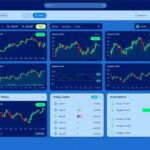Now Reading: Crypto Market Cap Explained: How to Read Market Data Like a Pro
- 01
Crypto Market Cap Explained: How to Read Market Data Like a Pro
Crypto Market Cap Explained: How to Read Market Data Like a Pro
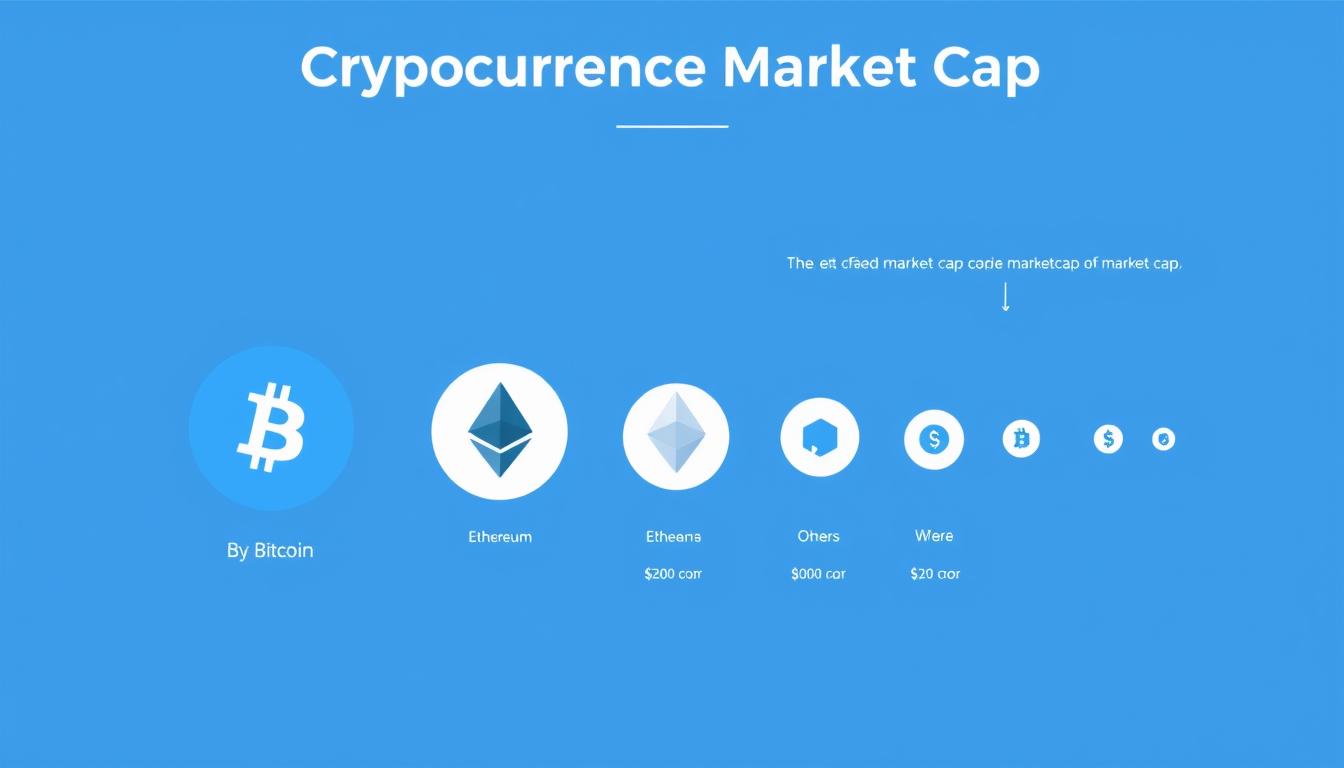
If you’ve ever looked at cryptocurrency websites, you’ve probably seen the term “market cap” everywhere. But what exactly does it mean, and why should you care? This guide will break down crypto market cap in simple terms, showing you how to use this crucial metric to make smarter investment decisions. Whether you’re completely new to crypto or looking to sharpen your analysis skills, you’ll learn how to interpret market data like an experienced investor.
What Is Crypto Market Cap?
Imagine crypto market cap as a scoreboard for the cryptocurrency economy. Just as a company’s market capitalization tells you its total value in the stock market, crypto market cap shows you the total value of a cryptocurrency in circulation.
In simple terms, market cap represents how much money is currently invested in a particular cryptocurrency. It’s calculated using a straightforward formula:
Market Cap = Circulating Supply × Current Price
The circulating supply is the number of coins currently available and in public hands. The current price is simply what people are paying for one unit of that cryptocurrency right now.
Let’s look at a real-world example to make this clearer:
| Crypto | Price | Circulating Supply | Market Cap |
| Bitcoin (BTC) | $116,878 | 19.91 Million | $2.33 Trillion |
| Dogecoin (DOGE) | $0.2408 | 150.58 Billion | $36.27 Billion |
Notice how Bitcoin’s price is much higher than Dogecoin’s, but the market cap difference is even more dramatic. This is because market cap accounts for both price and supply, giving you a more complete picture of a cryptocurrency’s economic footprint.
Want to check current market caps?
Get real-time data on thousands of cryptocurrencies to stay informed.
Why Market Cap Matters
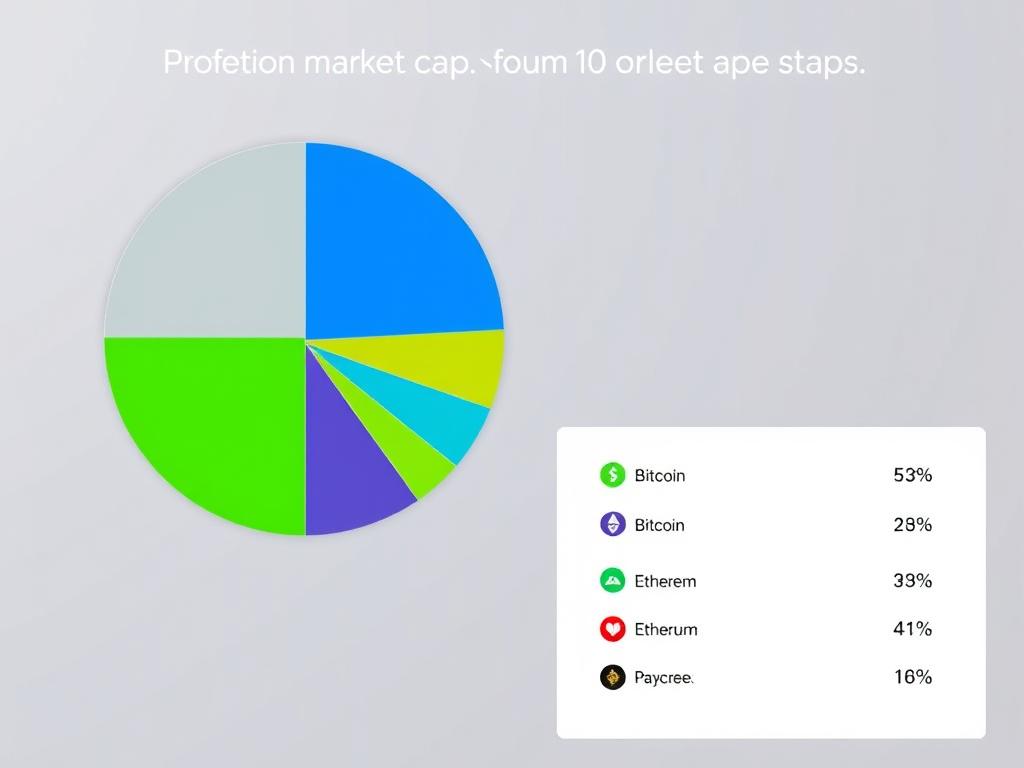
Market Dominance
Market cap helps you understand which cryptocurrencies dominate the market. As of today, Bitcoin represents about 54% of the total cryptocurrency market cap, while Ethereum accounts for roughly 14%. This dominance metric gives you insight into which cryptocurrencies have the most influence on the overall market.
Risk Assessment
Market cap also helps you gauge risk. Cryptocurrencies generally fall into three categories based on their market cap:
Large-Cap Cryptocurrencies
Market cap above $10 billion
Examples: Bitcoin, Ethereum
Risk level: Lower (relatively)
Stability: More established, less volatile
Mid-Cap Cryptocurrencies
Market cap between $1-10 billion
Examples: Cosmos, VeChain
Risk level: Medium
Stability: Moderate volatility
Small-Cap Cryptocurrencies
Market cap below $1 billion
Examples: New projects, niche tokens
Risk level: Higher
Stability: Highly volatile
Generally, larger market cap cryptocurrencies are considered safer investments, while smaller ones offer higher potential returns but with significantly more risk. This categorization helps you balance your portfolio according to your risk tolerance.
“Market cap is like a risk thermometer for crypto investments. The larger the market cap, the less likely the asset will experience extreme volatility in short periods.”
How to Analyze Market Cap Trends
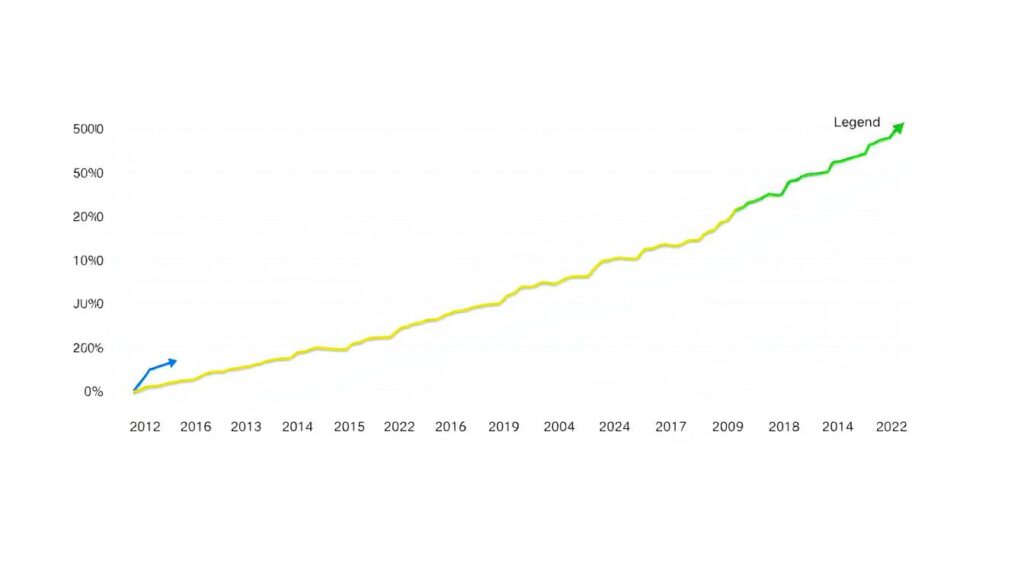
Comparing to Traditional Markets
To put crypto market caps in perspective, it helps to compare them with traditional markets:
| Asset Class | Total Market Cap | Comparison to Crypto |
| Gold | ~$13.7 Trillion | ~3.3x larger than crypto |
| S&P 500 | ~$41.8 Trillion | ~10x larger than crypto |
| Global Stock Markets | ~$106 Trillion | ~25x larger than crypto |
| Total Crypto Market | ~$4.1 Trillion | Baseline |
Total Crypto Market Cap as a Sentiment Indicator
The total cryptocurrency market cap serves as an excellent sentiment indicator. When it’s growing, it suggests increasing investor confidence in the crypto ecosystem. Conversely, a declining total market cap often indicates fear or uncertainty.
By tracking the total market cap over time, you can identify:
- Bull markets (sustained growth in total market cap)
- Bear markets (sustained decline in total market cap)
- Market cycles and potential turning points
- Overall adoption trends for cryptocurrencies
Track Your Crypto Portfolio
Create a free account to monitor your investments and track market cap changes over time.
3 Common Market Cap Analysis Mistakes
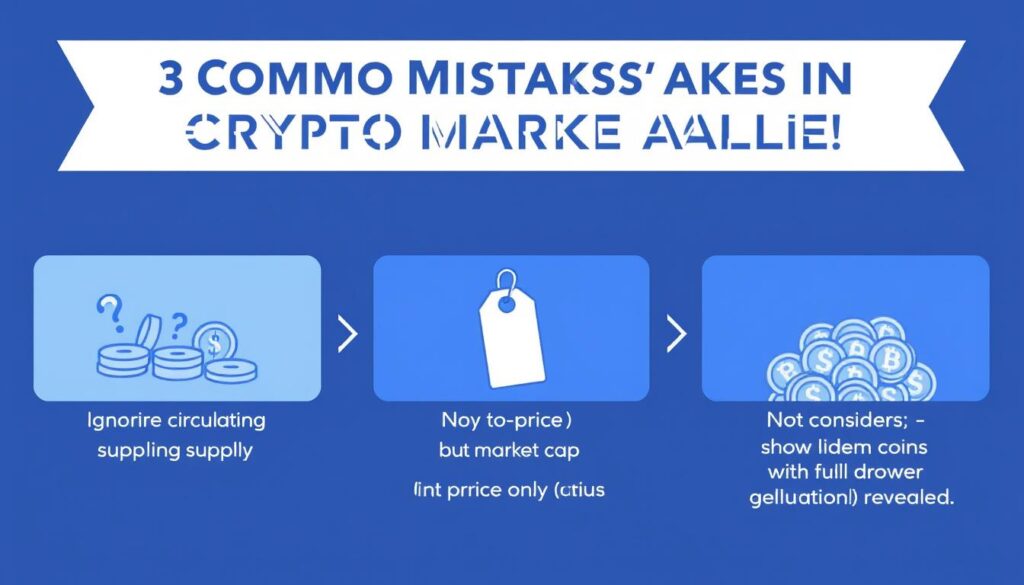
Mistake #1: Ignoring Circulating Supply
Many beginners focus solely on price, thinking a $0.01 coin is “cheaper” than a $100 coin. However, without considering the circulating supply, this comparison is meaningless. A low-priced coin with a massive supply can have a larger market cap than a high-priced coin with limited supply.
Mistake #2: Conflating Price Movement with Market Cap Change
Price increases don’t always mean proportional market cap increases. If new coins are being released into circulation (inflation), a cryptocurrency’s price might stay the same or even rise slightly while its market cap increases significantly. Always check both metrics.
Mistake #3: Not Considering Fully Diluted Valuation
Many cryptocurrencies have a maximum supply that’s higher than their current circulating supply. Fully Diluted Valuation (FDV) calculates market cap using the maximum supply instead. This helps you understand potential dilution effects if all coins were in circulation.
“The price of a cryptocurrency tells you very little on its own. Always check the market cap to understand its true economic scale.”
Practical Checklist: Analyzing Crypto Market Cap
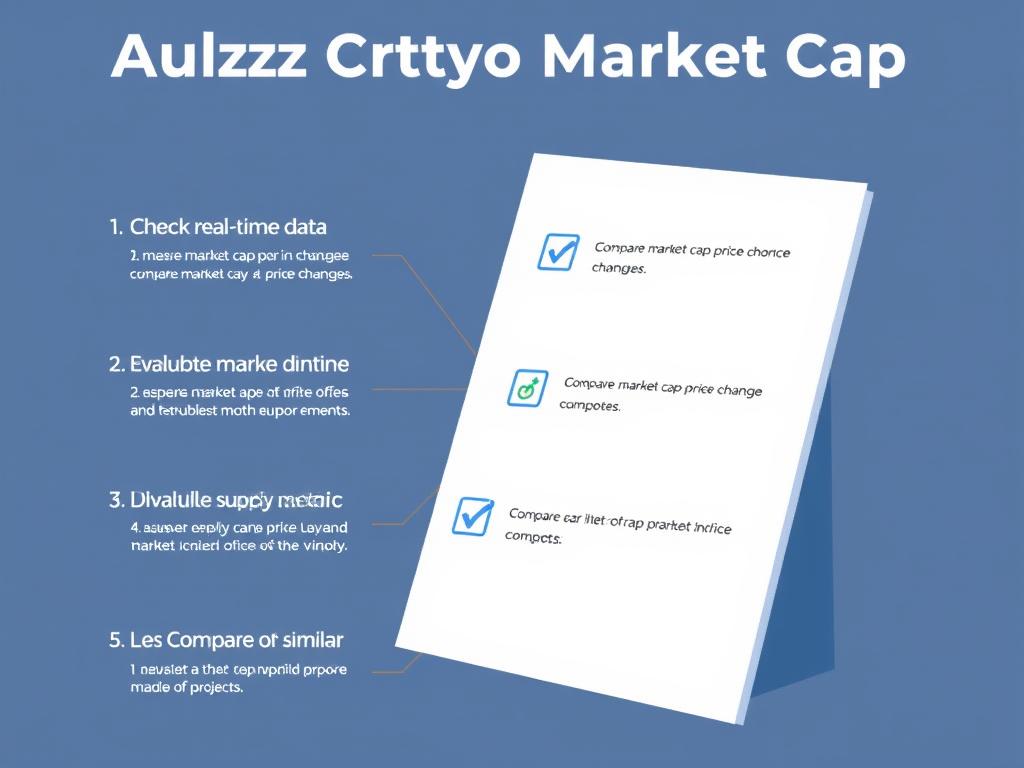
Follow these steps to effectively analyze cryptocurrency market caps:
- Check real-time data on reputable platforms like CoinGecko or CoinMarketCap to get accurate market cap information.
- Compare the percentage change in market cap versus price to understand if changes are due to price movement or supply changes.
- Evaluate a cryptocurrency’s market dominance by dividing its market cap by the total crypto market cap. Higher percentages indicate more established cryptocurrencies.
- Consider supply metrics including:
- Circulating supply (currently available)
- Maximum supply (will ever exist)
- Total supply (created so far, including locked tokens)
- Compare market caps of similar projects to identify potentially undervalued or overvalued cryptocurrencies within the same category.
Frequently Asked Questions About Crypto Market Cap
Is a higher market cap always better?
Not necessarily. A higher market cap typically indicates a more established and less volatile cryptocurrency, but it also means there may be less potential for dramatic growth compared to lower market cap cryptocurrencies. Your investment strategy should align with your risk tolerance and goals.
How often does crypto market cap change?
Crypto market caps change constantly, as they’re calculated based on current prices which update in real-time. Major cryptocurrencies can see their market caps change by billions of dollars in a single day during volatile periods.
Can market cap be manipulated?
Yes, especially for smaller cryptocurrencies. Projects can manipulate market cap by controlling circulating supply information or through price manipulation on low-liquidity exchanges. This is why it’s important to research beyond just market cap numbers.
What’s the difference between market cap and volume?
Market cap represents the total value of all coins in circulation, while volume refers to how much of that cryptocurrency has been traded in a specific time period (usually 24 hours). Volume indicates trading activity and liquidity, while market cap indicates overall size.
Conclusion: Becoming a Market Cap Analysis Pro
Understanding crypto market cap is essential for making informed investment decisions in the cryptocurrency space. By looking beyond just price and considering the full picture that market cap provides, you can better assess the relative size, risk, and potential of different cryptocurrencies.
Remember that market cap is just one metric among many that you should consider when evaluating cryptocurrencies. Use it alongside other indicators like trading volume, development activity, adoption metrics, and fundamental analysis for a comprehensive view.
Ready to Apply Your Market Cap Knowledge?
Start analyzing cryptocurrencies like a professional with real-time market data.









